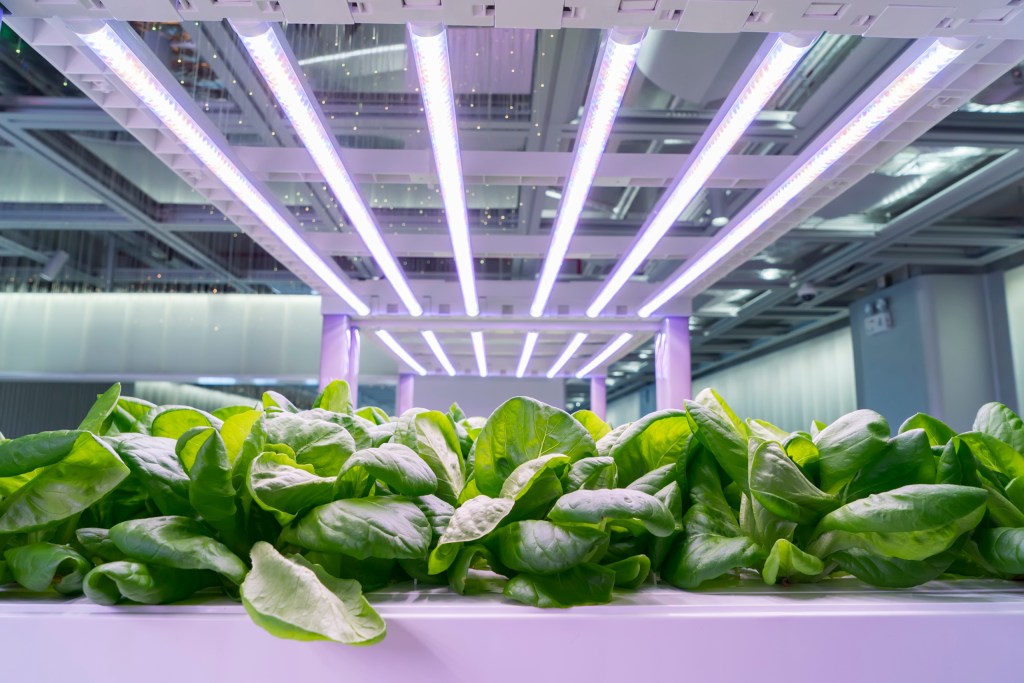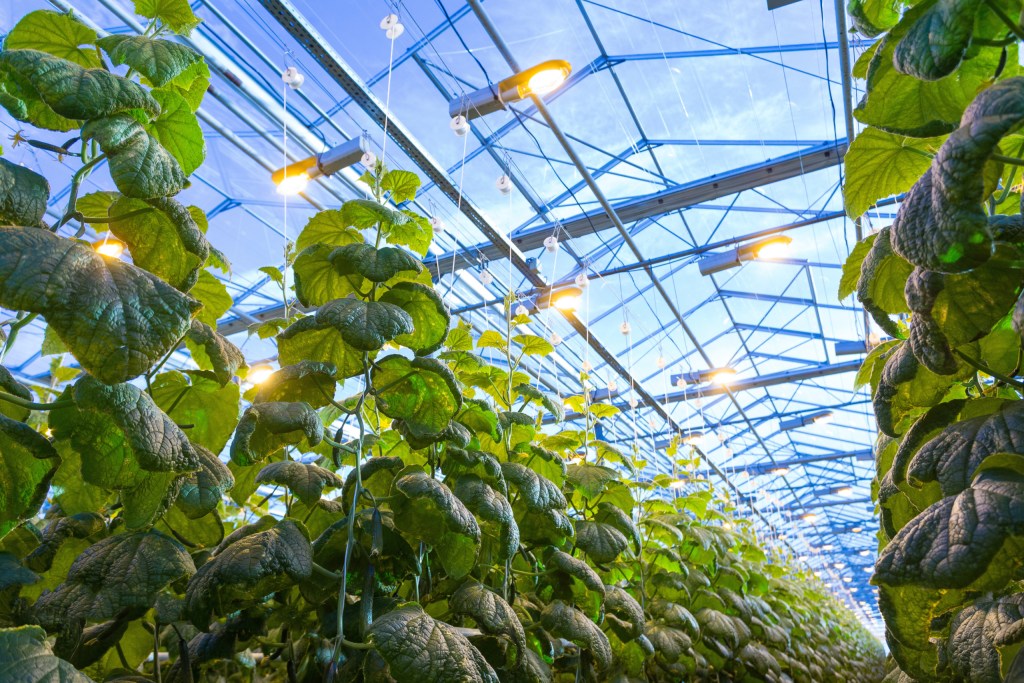If you want your plants to truly flourish, it’s going to take special care, which means ensuring accurate brightness and suitable temperatures inside your greenhouse. Your efforts must be geared to help the entire process of photosynthesis, which in many cases isn’t maximized by the natural lighting your greenhouse receives from the sun.
By choosing the right greenhouse grow lights you can supplement natural lighting in just the way your plants need. Plus, if you know what you’re doing with grow lights, you can live anywhere in the world and enjoy a planting process that works all year.
As we discuss all that goes into choosing greenhouse lights, be sure to think in terms of minimizing costs and maximizing your return on investment (ROI).

Understanding greenhouse lighting requirements
There’s so much more to proper greenhouse lighting than you might think. However, while there’s a lot to consider, there are three major factors you need to keep in mind:
- How much sunlight you have available
- What time of year it is
- What kind of crops you are attempting to grow
In general, greenhouses need at least six hours of full-spectrum light or direct sunlight per day. You’ll need to integrate supplemental, artificial lighting if this can’t be done naturally. Of course, supplemental lighting uses sets of artificial grow lights to encourage healthy crop growth.
If you’re not a commercial grower, then it’s likely you’d use grow lights to extend the overall growing season, whereas if you’re running a commercial greenhouse, you’ll be looking to enhance your harvest and net profits.
With that said, whether you’re a hobbyist or you’re running a business, you’ve got a variety of lighting options from which to pick and choose.
Consider these different kinds
As noted earlier, there are a number of different grow lights you may wish to use in your greenhouse. Each has its pros and cons.
Incandescent grow lights
For instance, incandescent lights are super cheap, but they also only last for around 1,000 hours or so. Other grow light options simply blow incandescent bulbs away when it comes to longevity. Additionally, while they might be the option with the lowest upfront cost, the cost to operate them all but negates the initial benefit of being inexpensive to purchase.
In terms of using incandescent bulbs, you’ll need to be a bit cautious since these lights can become quite hot and could damage your plants.
Fluorescent bulbs
These kinds of lights are more energy efficient than incandescent bulbs and can last at least 9,000 hours longer! The downside is that they are also much more expensive.
HID lights
Immensely popular, these lights outlast both of those listed above. Able to work for up to 24,000 hours, these too are more energy efficient than incandescent lights. However, HID lights aren’t suitable for all types of greenhouses since they require large fixtures and generate an incredible amount of heat.
LED lights
LED (light-emitting diodes) are more popular than ever these days. Benefits include the fact that they’re one of the most energy-efficient, environmentally friendly options available and they last a long time, too. Still, just as the downside to incandescent bulbs negates their low, up-front cost, the same is true of LED lights only in reverse. LED lights are the most expensive option on the market today.

Choose the grow lights that are right for your needs
One of the most crucial (and expensive) choices you have to make when it comes to controlling your greenhouse environment is solving the lighting issue. Whether you decide upon a traditional grow light or lights based on newer technology, you need to choose what’s right for your budget and your greenhouse’s actual needs.
Select the right light
Keep in mind that the right greenhouse lights can help temper your overall operating costs, optimize output, and help you to keep up with a rapidly changing market.
To select the right kind of lights for you, do the following:
- Decide what your operation’s goals are
- Decide what your target lighting requirements are
- Determine the total area of space you’ll need to cover
- Compare and contrast how each lighting option impacts the above
- Estimate your total initial purchase cost (the obvious cost)
- Calculate your ROI and how long it’ll take to recoup your costs
- Make your purchase
If you want crops that grow year-round, having a greenhouse with proper lighting is essential regardless of exterior conditions. There’s a lot to think about when it comes to putting together the best greenhouse for your plants, but with the information we’ve provided, we’re confident you’ll make the right choice every time.
Editors' Recommendations
- What you need to know about light deprivation (or ‘light dep’) greenhouses and how they work
- Do grow lights really work? How to make sure you’re not wasting your money
- A complete guide to the best lights to choose for your greenhouse
- 5 inexpensive indoor greenhouses your plants will love
- How to choose the best outdoor sink for your entertaining area



